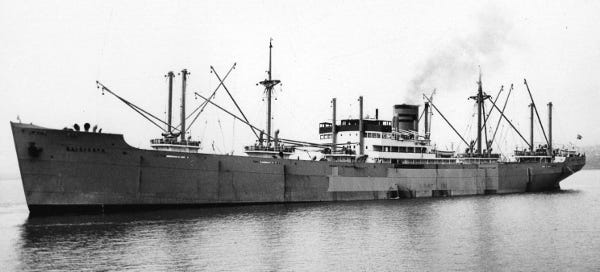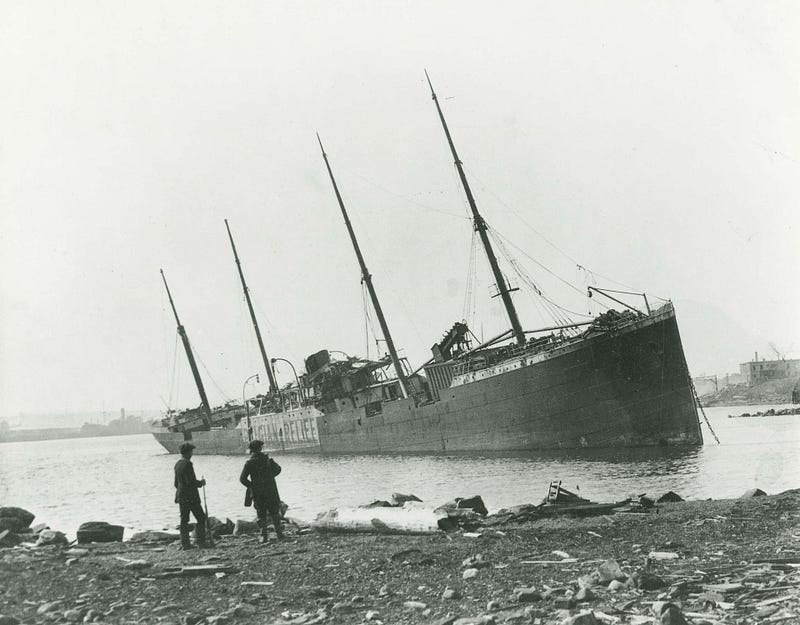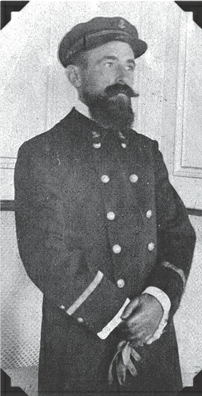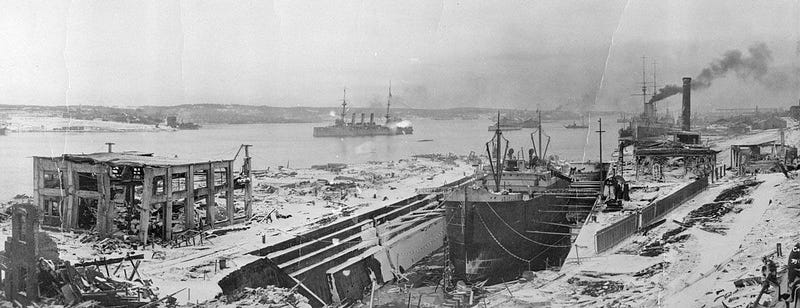 ver since their invention under the Tang Dynasty in the 9th century, explosives have been a mainstay in all types of warfare. As the years progressed, so did the power of the explosives used in warfare. Gunpowder-based explosives started to become obsolete when Nitroglycerin started being used in the creation of explosives, a chemical with a much higher explosive potential than gunpowder.
ver since their invention under the Tang Dynasty in the 9th century, explosives have been a mainstay in all types of warfare. As the years progressed, so did the power of the explosives used in warfare. Gunpowder-based explosives started to become obsolete when Nitroglycerin started being used in the creation of explosives, a chemical with a much higher explosive potential than gunpowder.
Such chemical explosives would be used throughout the late 19th century and the early 20th century, and even after the invention of nuclear explosives, most small to medium scale explosives use chemical explosives in their payload. Transporting these volatile ingredients is always a dangerous job and, as seen in our scenario, one wrong step can end up in disaster.
The Great War
During the Great War, the United Kingdom was cut off from most of mainland Europe. Much of the island’s supplies came over from North America, more specifically from the Canadian port of Halifax. At Halifax, the Royal Navy would load up on supplies such as arms and explosives, which were then shipped to the United Kingdom, where they were used during the war effort.

During the height of the war, the port saw much use with it often being crowded with Royal Navy ships loading supplies to be shipped across the Atlantic. The city and the port would grow as a result of the newfound industry boosting the traffic the port faced.
Other nations allied to the British such as Norway (although Norway was technically neutral, the UK government pressured the country to help with shipping) used the port also. This meant that although more supplies could be taken from Canada to the UK, the port would often experience heavy traffic. This problem was the catalyst for our story.
SS Imo
The SS Imo was one of the steamships commissioned by Norway to help the UK with shipping supplies over from Canada to the island. The ship arrived in Halifax on 3 December after a long journey from the Netherlands, with the final destination being New York. The steamship was meant to pick up relief supplies for Belgium from New York and sail back after refueling at Halifax.

The ship spent 2 days in the Bedford Basin awaiting inspection. Clearance was given on 5 December, but due to delays with the refueling process, the ship couldn’t leave until the next day. Another ship would arrive in Halifax from New York on 5 December, the SS Mont-Blanc. This ship carried picric acid, TNT, and highly flammable fuel, all destined for use on the European front line against the Central Powers.
Due to its late arrival, the SS Mont-Blanc couldn’t enter the harbor as the anti-submarine nets were raised before its arrival. As a result, the ship had to wait until the next day to join the slow convoy in the Bedford Basin headed to Europe.
The next day the captain of the SS Imo, Pilot William Hayes, in a bid to make up for lost time due to the refueling delays, entered the ‘narrows’ of the port at way above the normal speed. This nearly resulted in the collision with two other ships passing through the ‘narrows’ of the port. Although the two ships were not harmed, the third ship the SS Imo would meet wouldn’t be as lucky.
Making up for lost time

The third ship the SS Imo would meet was the SS Mont-Blanc. As the SS Imo was coming out of the ‘narrows’, the SS Mont-Blanc was headed towards the Bedford Basin on the Dartmouth side of the harbor to join the convoy of slower cargo ships heading for Europe. The SS Imo’s trajectory coming out of the narrows intersected the path that the SS Mont-Blanc was taking towards the Bedford Basin.
The captain of the SS Mont-Blanc tried to make this known to the smaller ship by giving a short blast of the signal whistle to signify that the ship had right of way.
Due to SS Imo’s speed, no right of way could be given, and as such, the ship blew its signal whistle twice to signify that the large ship had to stop. The captain of the SS Mont-Blanc ordered for the engines to be stopped in hope that the resulting decrease in speed would be enough to avoid a collision.
The resulting changes in the course weren’t enough to avoid the collision. SS Imo crashed into the Number 1 cargo compartment of the SS Mont-Blanc. The crash toppled the barrels full of fuel on the deck of the ship, which then leaked into the hold and cargo compartments. Although initially, the fuel didn’t catch on fire as the SS Imo reversed out of the cargo compartment, the sparks created by the metal-on-metal friction led to the fuel combusting.
As the fire engulfed the ship, the captain gave the abandon ship command, and shortly after the uncontrolled ship beached itself, the TNT ignited. A shockwave so powerful was created by this explosion that people in cities over 200km away felt the blast. The explosion had the power of 2.9 kilotons of TNT, which was powerful enough to rip up the ship, sending its hull flying 300m into the air. The 90-mm deck gun of the ship was sent flying and was found 5.6km away, it’s half a ton anchor was also found over 3km away.

Surprisingly, all but one of the SS Mont-Blanc crew members survived the blast. The SS Imo was beached by the ensuing 18-meter tsunami created by the blast. Another by-product of the blast was hot shards of metal that showered the port city leading to fires springing up across the town. The blast and ensuing chaos led to 1900 deaths, of which 1600 died instantly after the blast, with also 9000 being injured.

The death toll would have been much worse if it wasn’t for the sacrifice of one man who worked at the local railyard near Pier 6. Hearing of the imminent explosion, Patrick Vincent Coleman decided that rather than running away like his colleagues, he would stay to warn a passenger train only minutes away from arriving about the imminent explosion. This would also lead to most trains that were heading into Halifax stopping, saving many more than the 300 on the incoming passenger train. One of the last messages he sent was:
“Hold up the train. Ammunition ship afire in harbor making for Pier 6 and will explode. Guess this will be my last message. Good-bye boys.”
Such stories can teach us about the benefits of not rushing into situations and following the guidelines of others with more experience place. With the diligence to follow the speed limit of the ‘narrows’, the SS Imo wouldn’t have been in a position to collide with the SS Mont-Blanc, potentially saving nearly 2000 lives. By rushing and trying to make up for lost time the ship triggered one of the biggest man-made disasters Canada has ever seen.
When doing something, make sure you look ahead and don’t rush into it. Take the guidelines that others place down and follow them as, for the most part, they are there for your and everyone’s safety. Such a message is ever more important in a world where many refuse to wear a mask to save the lives of others.

Student of Philosophy, Politics and Economics. History fanatic. Contact: aneculaeseicg@gmail.com





